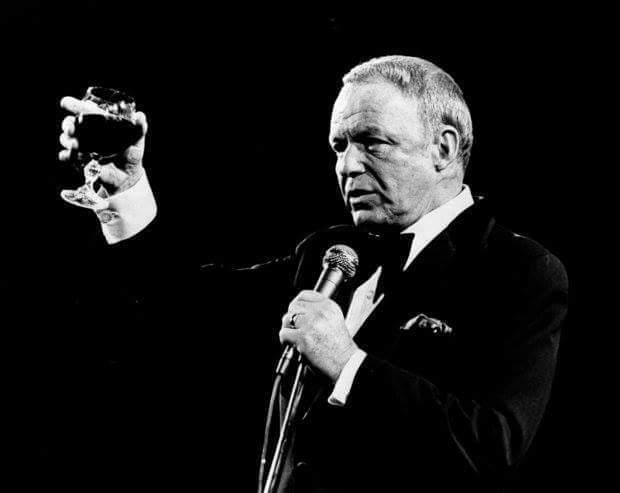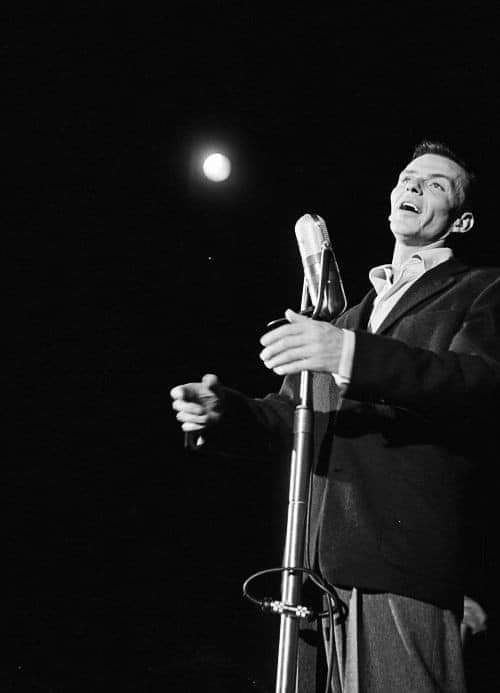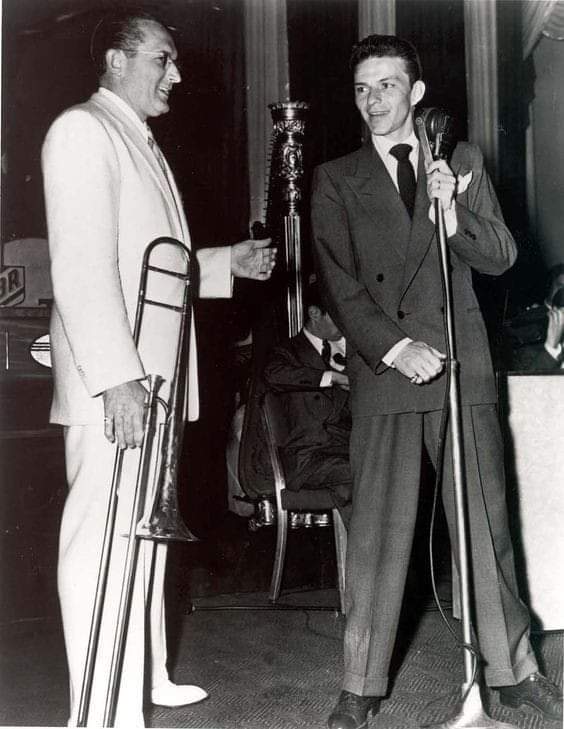
THE LAST YEARS OF FRANK SINATRA
by Mahnuel Munoz
Chapter 8
In June 1993 Frank Sinatra returned to Capitol Records, thirty-one years after leaving the company to work more freely on the label of his own creation, Reprise Records.
On the first day of recording, Monday the 28th, a first session is called between two and five in the afternoon, to which the singer does not show up. In the second call, set for seven in the afternoon, Sinatra arrives moody and absent at the tower that witnessed his most glorious days. As he crosses the hallway that leads to the legendary Studio A, he ignores the walls full of photos of himself and so many other giants who had created hundreds of immortal records right there. Perhaps he is avoiding looking in the face of a sublime past that he feels painfully far away.
The entire orchestra awaits in the studio. The musicians who play live with Frank are present, including pianist Bill Miller, Greg Field on drums, Chuck Berghofer on bass and Ron Anthony on guitar. You can also see several musicians who had been with Sinatra during the ’50s at Capitol, such as trumpeter Conte Candoli and trombonist George Roberts.
Frank contemplates the panorama with anxiety, and the tension can be chewed. Knowing that he will have to sing in a soundproof booth, separated from the orchestra, he refuses to record. Since the beginning of his career he has worked with the musicians around him, and that is not going to change. That day it will no longer be possible to record, but the technical team will look for a quick solution by installing a small stage in the studio, a teleprompter, a pair of monitors and a handheld microphone for the singer, in order to reproduce a live performance, the routine that Sinatra is more accustomed to.
The problems, however, do not end there. On Tuesday the 29th Frank again refuses to record, although he rehearses with the orchestra “They Can’t Take That Away Frome Me” and “South Of The Border”.
Finally, on July 1, Sinatra shows up at the studio with the intention of recording and before singing a single note, he once again brings up to Ramone all of his doubts about the project. The producer knows how to calm the singer. “Okay, let’s do one,” Frank said. “But you better be right.”
After recording “Come Fly With Me”, everything suffered by Frank and the team involved in the recording is worth it; the orchestra sounds wonderful and Frank seems to snap out of his gloomy mood. The songs emerge and are immortalized one after another. Nine cuts are completed, the last of them a powerful revision of “I’ve Got The World On A String” and all the uncertainties that Frank harbors about his ability to continue being Sinatra in front of a microphone are completely dissolved. Everyone present breaks into an emotional applause.
The task is resumed on July 6 and 9, with a balance of eleven new recordings. Also rehearsed are “At Long Last Love”, “South Of The Border”, “The One I Love”, “That’s Life” and “You Are The Sunshine Of My Life”, none of which will end up being part of the band’s repertoire. albums.
Between July 14 and 17, Sinatra offers seven shows at the Stars Desert Inn in Las Vegas, after which he enjoys a well-deserved month of vacation.
During the month of August, two new sessions are called just for the musicians and a third to record Barbra Streisand’s part in the song “I’ve Got A Crush On You.”
Meanwhile, Frank returns to work with a short ten-concert tour that takes him to Atlantic City, New Jersey, New York and Illinois. In the latter state he offers three recitals at the Paramount Arts Center in the city of Aurora, which contribute to boosting the town’s role as a destination for lovers of gambling; The Hollywood Casino, opened in June 1993, will begin to prosper as a result of those days.
Between October 1993 and the spring of 1994, more sessions were called to complete the repertoire of “Duets II”, and for some pieces the voice track from concert recordings between 1993 and 1994 was used. The atmosphere in the studio changed completely, Sinatra is happy and eager to record, perhaps conscious of writing a historical chapter. After finishing one of the sessions, as he leaves the studio and walks down the hallway, someone points out one of Frank’s old photos, and Sinatra looks at it and smiles. Now that venerable old man once again shares the top of the world with the black and white titan, and can hold his gaze without complexes. It is said that when Sinatra listens to the finished album for the first time, he cries with happiness.
The covers of the two albums are the work of the American expressionist painter LeRoy Neiman, who for half a century immortalized a multitude of musicians and athletes with his vibrant and colorful style.
The album costs more than $750,000 at the time, equivalent to almost $1,600,000 today. But it will be one of the best investments ever made by the record company.
If you want to visit more articles about the life of Frank Sinatra enter the following Sinatra Radio 24h link: https://sinatraradio24h.com/category/articles/
We remind you that you can also listen to Sinatra Radio 24 hours on your mobile phone by downloading our free applications for Android in the Play Store https://play.google.com/store/apps/details?id=sinatra.radio24h








